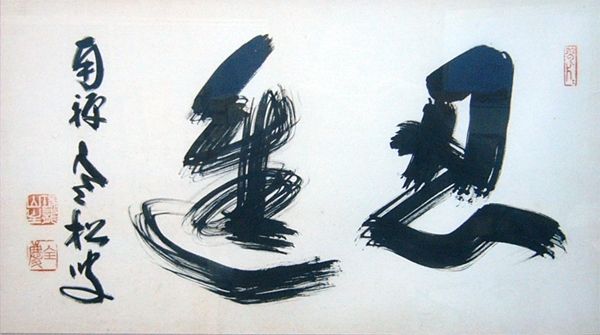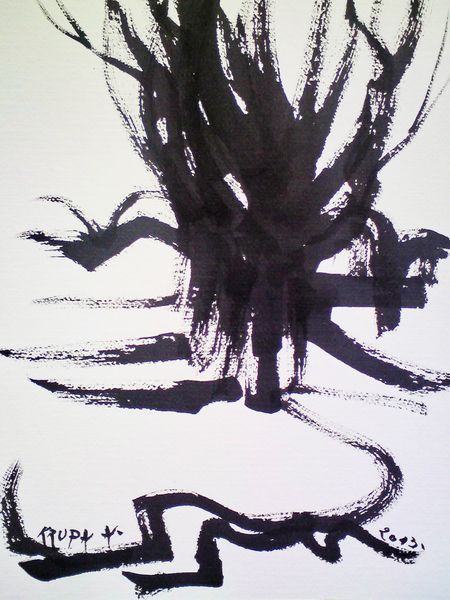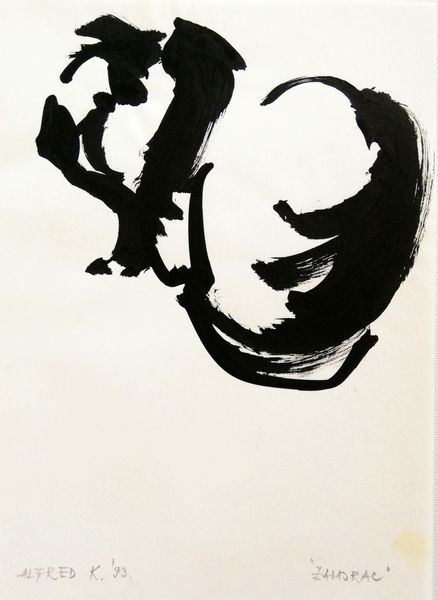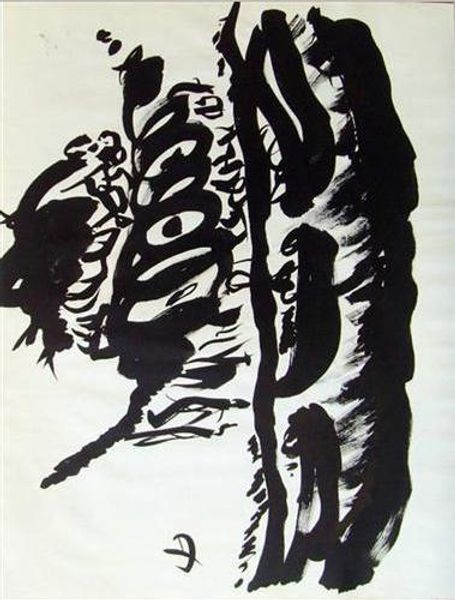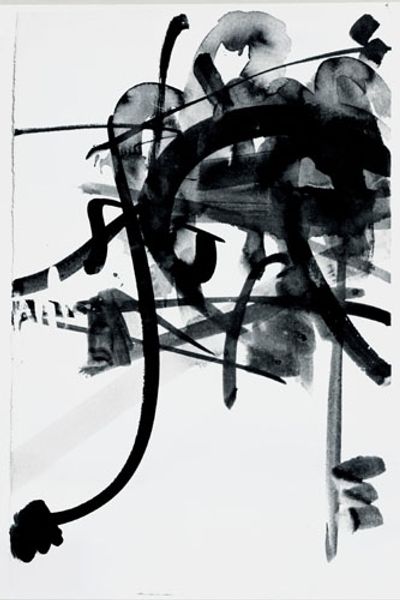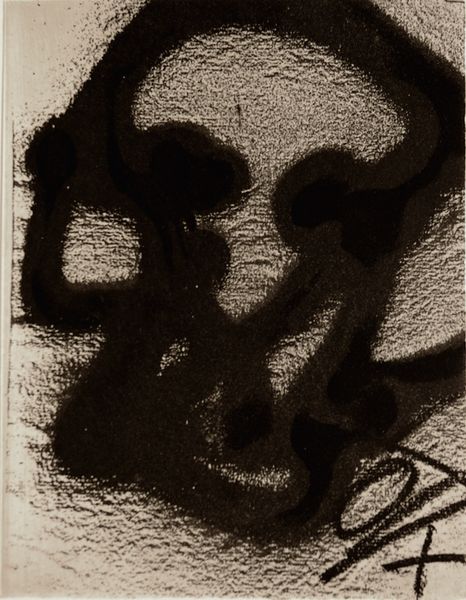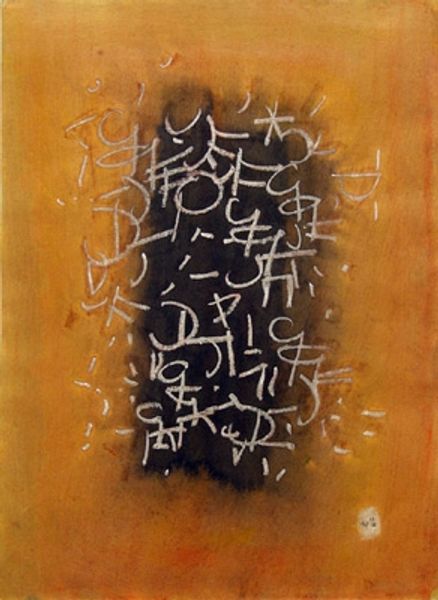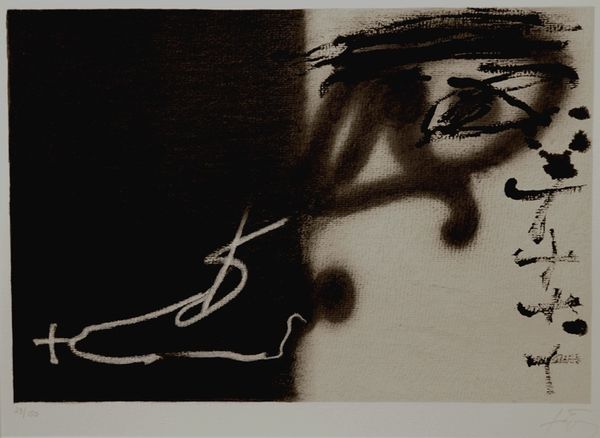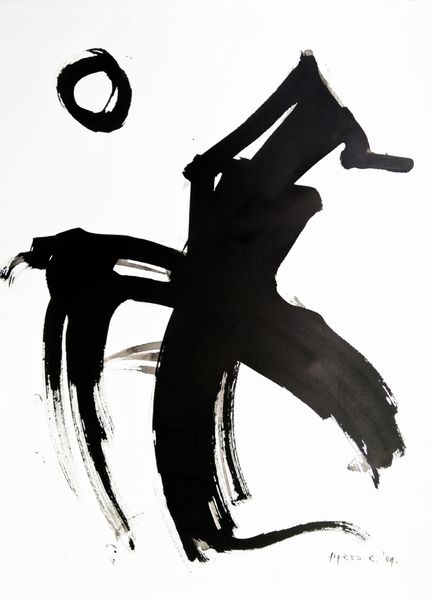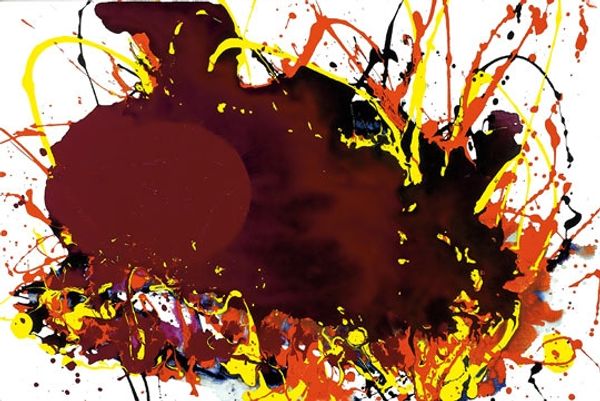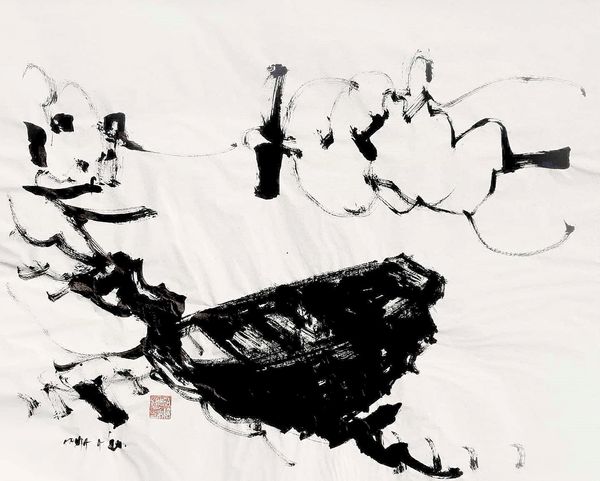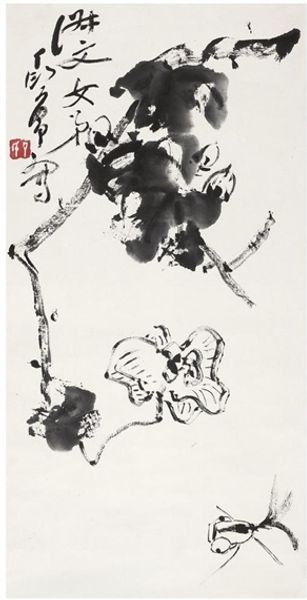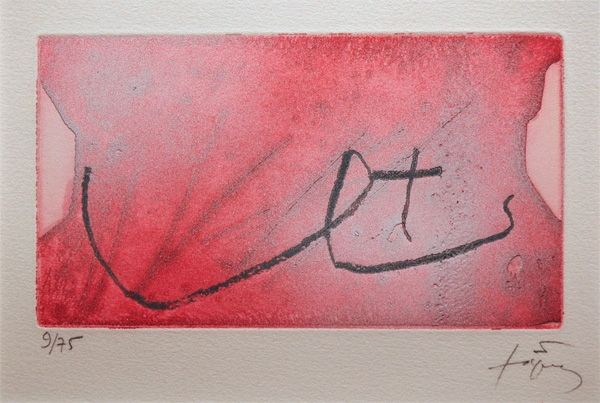
Copyright: Antoni Tapies,Fair Use
Curator: Standing before us is "Coeur et flèche", created by Antoni Tàpies in 1985. Tàpies was known for his mixed-media works incorporating humble materials like sand and marble dust into acrylic paint on canvas. Editor: It's jarring! The intense reds clash against the somber blacks, and everything appears...fragmented, like pieces of a disrupted narrative. What can you tell us about the socio-political contexts underscoring Tàpies’s artistic practice? Curator: Absolutely. Consider how Tàpies elevated non-traditional materials; we see him embracing arte povera sensibilities. His artistic process blurred boundaries between high art and craft through explorations in materiality and form, moving away from a celebration of the handmade into mechanical mark making. Editor: Yes, and situating this within the historical context—Franco’s dictatorial regime— we see a possible language of protest embedded within those lines and color choices, right? A deconstruction of conventional representation serving as an act of resistance. How was it displayed? Curator: Well, its lack of permanent collection listing could indicate that it exists primarily in private collections or has only been shown in temporary exhibitions, making broader interpretations regarding social visibility and its intended audiences somewhat limited. Still, his matter paintings were very influential. Editor: Matter painting...It is such a brutal, immediate description of this visual language! Thinking about that visual vocabulary—heart, arrow, circle, a plus sign—what are they indexing symbolically when read against Tàpies’s lived experience under Franco’s regime? Curator: The heart and arrow could represent love and loss and vulnerability; maybe a wounded nation? While the overlaid circular shapes, along with what looks to be a cross or mathematical symbol, may underscore ideas linked to time, order, rationality imposed on chaos. There is definitely something there. Editor: Agreed! Those brushstrokes possess raw emotive potential, and combined with such charged iconography and minimalist coloration... I cannot help but consider the socio-political subtext—that persistent critique underscoring his entire ouevre. Curator: Thinking about the artwork’s materials—acrylic paints and other materials—helps me remember all the art handling and fabrication processes necessary for creating the work. These steps were quite ordinary and likely quite time-consuming! Editor: And I will leave here pondering Tàpies’s abstract language speaking so powerfully about repression, resistance, and, finally, the enduring search for liberation.
Comments
No comments
Be the first to comment and join the conversation on the ultimate creative platform.
